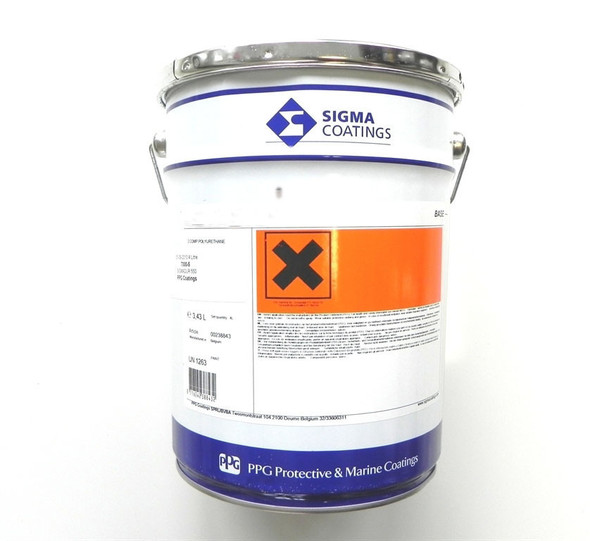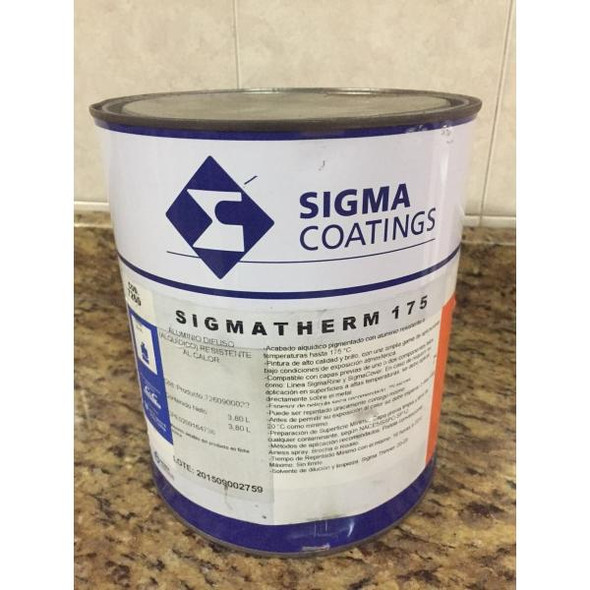Sigma marine paints
SIGMAGUARD CSF 650 SIGMA TANK COATING
- SKU:
- Sigmaguard-csf-650
- Weight:
- 20.00 KGS
- Shipping:
- Calculated at Checkout
Description
SIGMAGUARD CSF 650 SIGMA TANK COATING
GZ Industrial Supplies is a distributor of Sigma Marine coatings in Nigeria, SIGMAGUARD CSF 650 SIGMA TANK COATING is a two-component, solvent-free, amine-cured epoxy coating, used primarily for tank coating of crude oil ballast or aliphatic products, it is a chemical resistant tank lining. After application it is highly glossy, color is Green, off white and clear
PRODUCT CHARACTERISTICS OF SIGMAGUARD CSF 650 SIGMA TANK COATING
- Tank coating for crude oil/ballast and aliphatic petroleum products
- Also suitable as a coating system for the storage and transportation of drinking water
- Good resistance to various chemicals
- One-coat protection for steel structures, ships and storage tanks with excellent corrosion resistance
- Can be applied by heavy-duty, single-feed, airless spray equipment (60:1)
- Reduced explosion risk and fire hazard
- Good visibility due to light color
- Also, a conductive version is available ; SigmaGuard CSF 660
- Can be reinforced with chopped glass fiber or mat
- Clear version for glass-mat reinforced, solvent-free tank bottom system (see SYSTEM SHEET 4144)
- Meets the requirements of EI 1541 (coating systems for aviation fuel storage tanks and pipes)
- Excellent resistance to crude oil up to 60°C (140°F)
RECOMMENDED SUBSTRATE CONDITIONS AND TEMPERATURES
Substrate conditions
- Steel; blast cleaned to ISO-Sa21⁄2, blasting profile 50 – 100 μm (2.0 – 4.0 mils)
- system requirements.
-
Suitable primer; SIGMAGUARD 260, SIGMACOVER 280, SIGMAPRIME series or SIGMACOVER 522, depending on
Substrate temperature and application conditions.
- Steel; power tooling to ISO-St3 for small and isolated areas (like repairs and joint welds) in fresh water and potable water tanks where spot blasting might be impractical
- Substrate temperature during application and curing should be above 5°C (41°F)
- Substrate temperature during application should be at least 3°C (5°F) above dew point
SYSTEM SPECIFICATION
SIGMAGUARD CSF 650: 1 x 300 μm (12.0 mils); or a suitable primer of 50 μm (2.0 mils) + SIGMAGUARD CSF 650: 1 x 250 μm (10.0 mils)
INSTRUCTIONS FOR USE
Mixing ratio by volume: base to hardener 80:20 (4:1)
- At lower temperature, the viscosity will be too high for spray application
- For recommended application instructions, see working procedure
- The temperature of the mixed base and hardener should preferably be above 20°C (68°F)
- No thinner should be added
Airless spray
- Use heavy-duty, single-feed, airless spray equipment, preferably 60:1 pump ratio and suitable high-pressure hoses/in- line heating or insulated hoses may be necessary to avoid cooling down of paint in hoses at low air temperature
- Application with 45:1 airless spray equipment is possible, provided in-line, heated high-pressure hoses are used
- Length of hoses should be as short as possible
Recommended thinner
No thinner should be added
Nozzle orifice
Approx. 0.64 mm (0.025 in)
Nozzle pressure
At 20°C (68°F) paint temperature min. 28.0 MPa (approx. 280 bar; 4061 p.s.i.). At 30°C (86°F) min. 22.0 MPa (approx. 220 bar; 3191 p.s.i.)
Note: In case of using 45:1 airless spray equipment, the paint must be heated to approximately 30°C (86°F) in order to obtain the right application viscosity
Brush/roller
Recommended thinner
For stripe coating and spot repair only, no thinner should be added
Cleaning solvent
THINNER 90-53 or THINNER 90-83
Notes:
-
- All application equipment must be cleaned immediately after use
-
- Paint inside the spraying equipment must be removed before the pot life has been expired
Product Technical Datasheet Download![]()
Frequently Asked Questions
1. Can I use regular paint instead of marine paint on my boat?
Regular paint is not recommended for use on boats as it does not provide the necessary protection against marine-specific challenges such as corrosion, UV exposure, and fouling. Marine paint is formulated with specialised ingredients to withstand the unique conditions of the marine environment.
2. Can I apply marine paint myself, or do I need a professional?
Applying marine paint can be done by boat owners themselves. However, proper surface preparation and application techniques are crucial for a successful and long-lasting finish. If unsure, it's advisable to consult with a professional or refer to the manufacturer's guidelines.
3. How do I prepare the boat's surface for painting?
Surface preparation is crucial for a successful paint job. It typically involves cleaning the surface, removing any loose or flaking paint, sanding or scraping to create a smooth and clean surface, and applying primers as necessary. Follow the specific instructions provided by the paint manufacturer.
Related Articles
Surface Preparation of Marine Vessels For Coating
How Long Does Marine Paint Last? Factors That Influence Its Lifespan
Contact Our Coatings Team for a free quote
1 Review
-
SIGMAGUARD CSF 650 SIGMA TANK COATING
SIGMAGUARD CSF 650 SIGMA TANK COATING was used to coat my tank carrying oil, it help protects against flame










